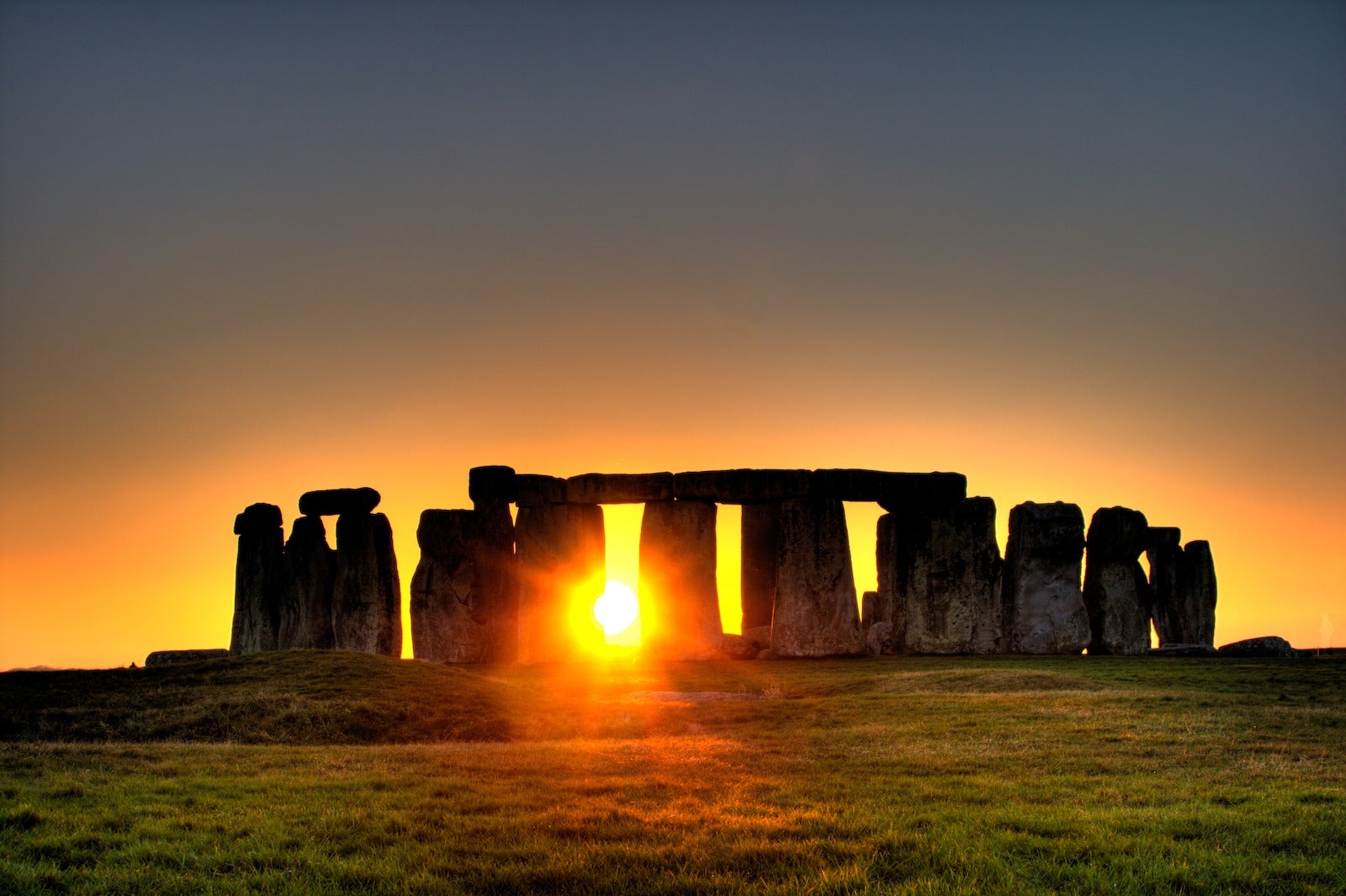
Ancient archaeological sites (like Stonehenge) were constructed so that the Sun would shine through a certain opening on some special day (typically a solstice). Wouldn’t Earth’s precession change the geometry of the situation over the years?
Michael C. West
Bethesda, Maryland
If you are lucky enough to stand in the center of Stonehenge on the summer solstice, you will see the Sun rise over the Heel Stone, as it has for millennia. The Heel Stone was erected outside the main ring of stones around 2600 b.c. This rock marked the summer solstice sunrise point, and it still does some 4,500 years after it was put in place.
To understand how the “wobble” of the 26,000-year-precession cycle has no noticeable effect on the Sun’s rise and set points, imagine the celestial sphere of stars that surrounds us. Your horizon, running from north through east, south, west, and back again to north, is a circle. Now, imagine turning on a bright light at Earth’s center and projecting our planet’s equator onto the celestial sphere. Earth’s equator then becomes another circle — the “celestial equator.” Finally, trace the Sun’s apparent yearly path against the background stars to make one last circle. This is the ecliptic. The Sun crosses the celestial equator twice each year at the March and September equinoxes. The Sun’s highest point, 23½° above the celestial equator, occurs at the June solstice. The Sun’s lowest point, 23½° below the celestial equator, represents the December solstice.

Precession causes Earth’s poles to trace a circle on the celestial sphere, shifting our current North Star, Polaris, nearer to or farther from the North Celestial Pole every 13,000 years. But precession doesn’t affect the ecliptic or the angle between the celestial equator and the ecliptic. As a result, it doesn’t affect the Sun’s position relative to the horizon. The relationship between these three circles remains the same as the millennia pass, so a monument like Stonehenge continues to mark the rising and setting of the Sun after 4,500 years.
Raymond Shubinski
Contributing Editor
This article was first published in 2014 and has been updated.









